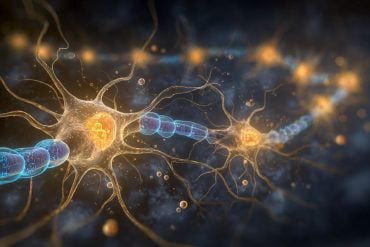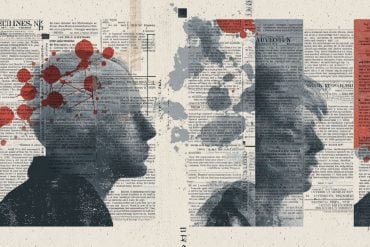Summary: New research shows that repetitive head impacts from contact sports trigger early and lasting brain changes in athletes years before chronic traumatic encephalopathy (CTE) is detectable. The study found neuron loss, microglial activation, and blood vessel changes in athletes under 51, even in those without tau buildup, the usual CTE marker.
These early signatures correlated with years of exposure to head impacts. The findings may help develop future diagnostics and treatments to protect athletes and prevent dementia later in life.
Key Facts
- Neuron Loss: Up to 56% of neurons lost in impact-prone brain areas before tau buildup.
- Immune Response: Microglia activation increased with years of sports exposure.
- Vessel Changes: Altered blood vessel gene patterns may worsen brain oxygen supply.
Source: NIH
Research supported by the National Institutes of Health (NIH) shows that repeated head impacts from contact sports can cause early and lasting changes in the brains of young- to middle-aged athletes.
The findings show that these changes may occur years before chronic traumatic encephalopathy (CTE) develops its hallmark disease features, which can now only be detected by examining brain tissue after death.

“This study underscores that many changes in the brain can occur after repetitive head impacts,” said Walter Koroshetz, M.D., director of NIH’s National Institute of Neurological Disorders and Stroke (NINDS).
“These early brain changes might help diagnose and treat CTE earlier than is currently possible now.”
Scientists at the Boston University CTE Center, the U.S. Department of Veterans Affairs Boston Healthcare System and collaborating institutions analyzed postmortem brain tissue from athletes under age 51. Most of them had played American football. The team examined brain tissue from these athletes, using cutting-edge tools that track gene activity and images in individual cells.
Many of these tools were pioneered by the NIH’s Brain Research Through Advancing Innovative Neurotechnologies® Initiative, or The BRAIN Initiative®. The researchers identified many additional changes in brains beyond the usual molecular signature known to scientists: buildup of a protein called tau in nerve cells next to small blood vessels deep in the brain’s folds.
For example, the researchers found a striking 56% loss of a specific type of neurons in that particular brain area, which takes hard hits during impacts and also where the tau protein accumulates. This loss was evident even in athletes who had no tau buildup. It also tracked with the number of years of exposure to repetitive head impacts.
The findings thus suggest that neuronal damage can occur much earlier than is visible by the currently known CTE disease marker tau. The team also observed that the brain’s immune cells, called microglia, became increasingly activated in proportion to the number of years the athletes had played contact sports.
The study also revealed important molecular changes in the brain’s blood vessels. These changes included gene patterns that could signal immune activity, a possible reaction to lower oxygen levels in nearby brain tissue, and thickening and growth of small blood vessels.
Together with these findings, the researchers identified a newly described communication pathway between microglia and blood vessel cells. The authors suggest that this crosstalk may help explain how early cellular problems set the stage for disease progression long before CTE becomes visible.
The study is one of the first to focus on younger athletes, shifting attention from advanced CTE in older people to the earliest cellular signatures of damage.
“What’s striking is the dramatic cellular changes, including significant, location-specific neuron loss in young athletes who had no detectable CTE,” said Richard Hodes, M.D., director of NIH’s National Institute on Aging (NIA). “Understanding these early events may help us protect young athletes today as well as reduce risks for dementia in the future.”
By revealing the earliest cellular warning signs, this work lays the foundation for new ways to detect brain effects of repetitive head injuries and potentially lead to interventions that could prevent devastating CTE neurodegeneration.
Funding: This research was supported by NINDS and NIA through grants F31NS132407, U19AG068753, RF1AG057902, R01AG062348, R01AG090553, U54NS115266, and P30AG072978.
About this TBI and CTE research news
Author: NIH Office of Communications
Source: NIH
Contact: NIH Office of Communications – NIH
Image: The image is credited to Neuroscience News
Original Research: Open access.
“Repeated head trauma causes neuron loss and inflammation in young athletes” by Walter Koroshetz et al. Nature
Abstract
Repeated head trauma causes neuron loss and inflammation in young athletes
Repetitive head impacts (RHIs) sustained from contact sports are the largest risk factor for chronic traumatic encephalopathy (CTE).
Currently, CTE can only be diagnosed after death and the events that trigger initial hyperphosphorylated tau (p-tau) deposition remain unclear. Furthermore, the symptoms endorsed by young individuals are not fully explained by the extent of p-tau deposition, severely hampering therapeutic interventions.
Here we observed a multicellular response prior to the onset of CTE p-tau pathology that correlates with number of years of RHI exposure in young people (less than 51 years of age) with RHI exposure, the majority of whom played American football.
Leveraging single-nucleus RNA sequencing of tissue from 8 control individuals, 9 RHI-exposed individuals and 11 individuals with low-stage CTE, we identify SPP1-expressing inflammatory microglia, angiogenic and inflamed endothelial cells, astrocytosis and altered synaptic gene expression in those exposed to RHI.
We also observe a significant loss of cortical sulcus layer 2/3 neurons independent of p-tau pathology. Finally, we identify TGFβ1 as a potential signal that mediates microglia–endothelial cell cross talk.
These results provide robust evidence that multiple years of RHI is sufficient to induce lasting cellular alterations that may underlie p-tau deposition and help explain the early pathogenesis in young former contact sport athletes.
Furthermore, these data identify specific cellular responses to RHI that may direct future identification of diagnostic and therapeutic strategies for CTE.






